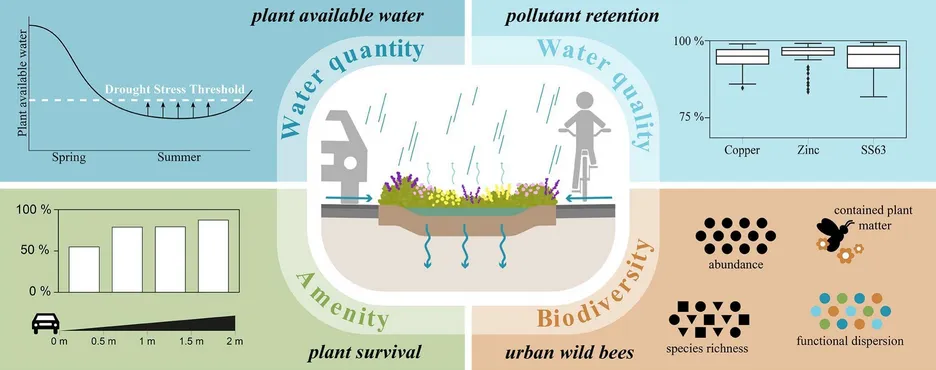Sustainable Urban Drainage Systems such as infiltration swales are well-established stormwater control measures in urban areas, and benefits are well described. However, interdisciplinary studies on multifunctional swales under challenging urban conditions are still rare. Results from a field study are presented where infiltration swales at a heavily trafficked urban road were probed as an example of a multifunctional urban planning tool addressing water quality and quantity, amenity, and biodiversity challenges. Over a monitoring period of two years, the development of six pilot-scale swales with engineered soil media (with topsoil and topsoil-free) and native greening were monitored. We analyzed high pollutant retention for zinc, copper, and fine particles (> 94 %) for both soil media tested and accumulation, particularly in the upper first centimeters. Seepage water concentrations ranged between 37 and 46 μg/L Zn, 10.6–12.3 Cu μg/L, and 11.4–22.4 mg/L SS63. Improved water storage capacity through the amendment of brick sand resulted in low drought stress for plants. Seven out of twelve native perennial species exhibited low mortality rates <25 %. Plant mortality did not differ between the soil media, but was significantly (p < 0.001) affected by the distance from the road and with increased pollutant loads. A positive effect on wild bees was detected by the flower-rich greening with increased abundance, α-diversity, and functional dispersion compared to reference areas. In conclusion, the study revealed the potential multifunctionality of urban infiltration swales in interdisciplinary cooperation. The findings provide a basis for the practical implementation of sustainable urban development.
